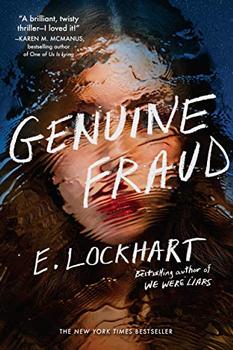Summary | Excerpt | Reading Guide | Reviews | Beyond the book | Read-Alikes | Genres & Themes | Author Bio

The cover of Uses for Boys, the debut novel of Erica Lorraine Scheidt, is confusing. It depicts two teens – a boy and a girl – kissing, with a strand of tiny white lights loosely wrapped around their shoulders and waists. The lighting is muted and frosted, save for firefly spots of bright. The image is romantic. It suggests love, maybe first love, perhaps, even, the first kiss in a burgeoning relationship. But the title of the novel is written across the middle of the cover. Uses for Boys it reads. This direct and, perhaps, even crass title, blurs the idea of romance. The cover becomes confusing or perhaps, contradictory, as its words and image are at a disconnect.
As it turns out the cover is just right. Because inside is a story that is – well – confusing and contradictory. Anna, the central character, is seven when Uses for Boys begins. She is the only child of her single mom and the two of them are an inseparable team. It is the happy times, Anna says. The "tell-me-again" times. Anna begs her mother. "'Tell me again,' I say, and she tells me again how she wanted me more than anything. 'More than anything in the world,' she says, 'I wanted a little girl…Now I have everything,' she says and the side of her foot presses against the side of mine." The happy times don't last though. When Anna turns eight, her mom gets a boyfriend who becomes a stepfather. After a divorce, the cycle begins again. Worst of all, though, when yet another divorce happens, Anna's mother becomes seriously absent. She goes away for days at a time. And even when she breezes in she seems to have one foot out the door. She dyes her hair, gets a facelift, and wears too much perfume. Even young Anna knows, somewhere deep inside, that her mother is searching for something – and that Anna is not, in fact, everything to her mother anymore.
Told in a lyrical, yet stark style – very short chapters that make strong, smart use of repetition, rhythm and honest, frank prose – Uses for Boys explores Anna's coming of age. She is a girl who learns to pull herself up by her own bootstraps. Boys use her, but, as the title suggests, she learns to use them too. She engages in sexual encounters with a series of boys. She makes these boys – one after another after another – her everything.
This sounds bleak, and it is, but Scheidt creates many more notes than just one. Like the cover of the book, Anna could appear to be confusing or contradictory. She could be painted in very black and white brush strokes, labeled a slut or latchkey kid or a stoner or a dropout. But she doesn't appear this way. With an incredible economy of words, Scheidt crafts Anna into a nuanced, complicated character. One who is heartsick for her mother, who uses destructive coping mechanisms to survive, but also one who is resilient and clever, who is creative and smart. Anna manages to keep herself fed by stretching the money her mother gives her, and she has a keen aesthetic eye that shows in her unique clothing style and the way she decorates her space. Most critically, though, she is not satisfied with her life as it is, and she takes action to change it and herself. Anna can't be painted in monochrome colors. I think this is because Scheidt gets inside Anna's skin so fully. She doesn't describe her paragraph after paragraph after paragraph, she simply is Anna. An Anna with few words, but words chosen extraordinarily well.
In a way, the reader too, becomes Anna. When Anna feels heartbroken and trod upon and hurt, it is tough to not feel all of those things. And when Anna finally begins to find herself – and perhaps, find real love – the reader is offered this gift too. The feeling isn't much, but at the same time, it is everything too. Confusing? Contradictory? No, not the way Scheidt writes it. And not the way Anna lives it.
Uses for Boys is best suited for teens ages 14 and up. It is frank, and thus, there are some pretty explicit sexual scenes. They aren't gratuitous, but they are there. A quick read and worth it for sure.
![]() This review
first ran in the February 20, 2013
issue of BookBrowse Recommends.
This review
first ran in the February 20, 2013
issue of BookBrowse Recommends.

If you liked Uses for Boys, try these:

by E Lockhart
Published 2019
From the author of the unforgettable New York Times bestseller We Were Liars comes a masterful new psychological suspense novel - the story of a young woman whose diabolical smarts are her ticket into a charmed life. But how many times can someone reinvent themselves? You be the judge.

by Renee Watson
Published 2018
A timely and powerful story about a teen girl striving for success in a world that too often feels like it wants to break her.
Your guide toexceptional books
BookBrowse seeks out and recommends the best in contemporary fiction and nonfiction—books that not only engage and entertain but also deepen our understanding of ourselves and the world around us.